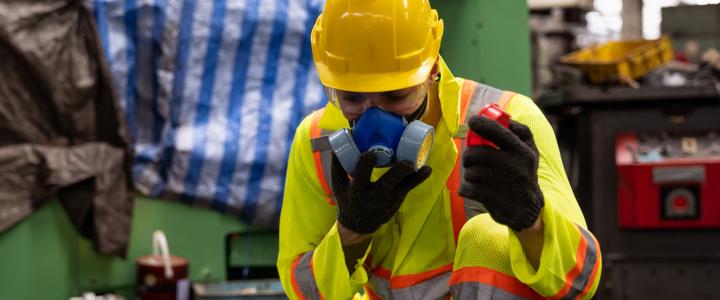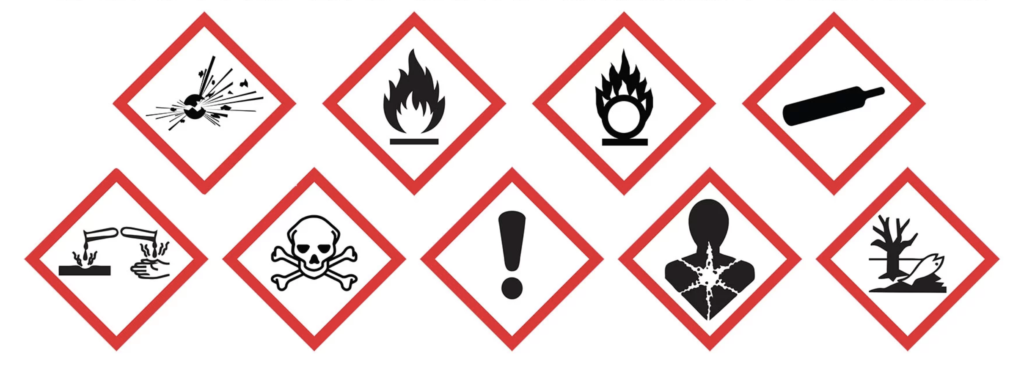In the modern world, safety is of paramount importance. With the prevalence of hazardous work environments, it is essential to ensure that employee safety is taken into consideration when designing and assessing operations. OSHA’s Hazard Communication Standard helps achieve just this.
Overview of OSHA’s Hazard Communication Standard
The Hazard Communication Standard (HazCom) is an integral part of OSHA’s safety regulations. It requires employers to inform their employees about hazardous chemicals they may be exposed to in the workplace.
What is the purpose of OSHA’s hazard communication standard?
The ultimate goal of the HazCom Standard is to achieve a safe work environment by ensuring that all chemical hazards in the workplace are evaluated and communicated to employers and employees.
5 Components of a Hazard Communication Program
The OSHA HazCom Standard outlines five key elements that employers must follow to ensure a safe working environment for their employees. These five key elements are hazard identification, labeling, safety data sheets, employee training, and program implementation. Below, we will discuss each of these five steps in detail so that employers can better understand the requirements of the HazCom Standard.

1. Hazardous Chemicals Inventory and Assessment
The first step is to create an inventory of all hazardous materials present in your work area. When making your list, be sure to:
- Take inventory of all chemicals and compile a written record.
- Ensure there is an SDS on file for each hazardous chemical.
- If any SDSs are missing, obtain a new copy from the supplier.
2. Chemical Labels and Warning Signs
Containers of hazardous materials should be clearly labeled to identify their contents and appropriate hazard warnings. Chemical manufacturers and distributors are usually responsible for supplying the proper label on the chemical container. However, employers still must ensure all purchased containers are correctly labeled.
Additionally, if a chemical is transferred from one container to another, the employer is responsible for labeling the new container.

Source: OSHA Hazard Communication Standard
3. Safety Data Sheets
Safety Data Sheets (SDSs) are an essential safety resource for any workplace. They provide detailed information about hazardous materials, including their physical characteristics and health hazards. SDSs are designed to communicate hazard information to employers, employees, and other personnel so they can work more safely with hazardous materials and protect themselves from potential risks.
4. Information and Training
All employees who may be exposed to hazardous chemicals in the workplace must be educated and trained to work with dangerous materials. The safety training should cover OSHA’s Hazard Communication Standard requirements, locations of any chemicals, and a written program that includes other relevant information on hazardous chemicals in the workplace. In addition, workers should learn how to:
- Become more mindful of workplace hazards.
- Read SDSs before working with any dangerous chemicals.
- Act in unsafe situations or emergencies where they are exposed to hazardous materials. (Regular drills and refreshers can help keep this information fresh in workers’ minds.)
- Prevent errors that can lead to mislabeling, spills, injuries, and other serious chemical-related incidents.
- Improve overall safety communication with coworkers.
5. Hazard Communication Program Implementation
A comprehensive hazard communication plan is essential to any workplace safety program. The purpose of HazCom safety program development is to provide employees with accurate, up-to-date information about potential health and safety hazards that may be present in the workplace, as well as ways to protect themselves from these hazards. By developing a written HazCom Program, employers can ensure their employees are better informed and prepared to work safely and productively. In addition, bringing in a workplace risk assessment consultant may be beneficial at this stage.

Contact Safety by Design for Professional Hazard Assessment
Safety by Design provides a framework for professional hazard assessment that considers all the necessary factors for a safe working environment. Our third-party safety consultants provide proper risk analysis and mitigation plans to reduce the likelihood of injury or harm to your workers. In addition, we’ll offer guidelines on how to handle hazardous materials, as well as advice on how to communicate effectively in the workplace. By trusting Safety by Design, businesses can ensure their employees are safe from potential hazards while performing their duties.
Contact us today to see how we can help you remain compliant.



